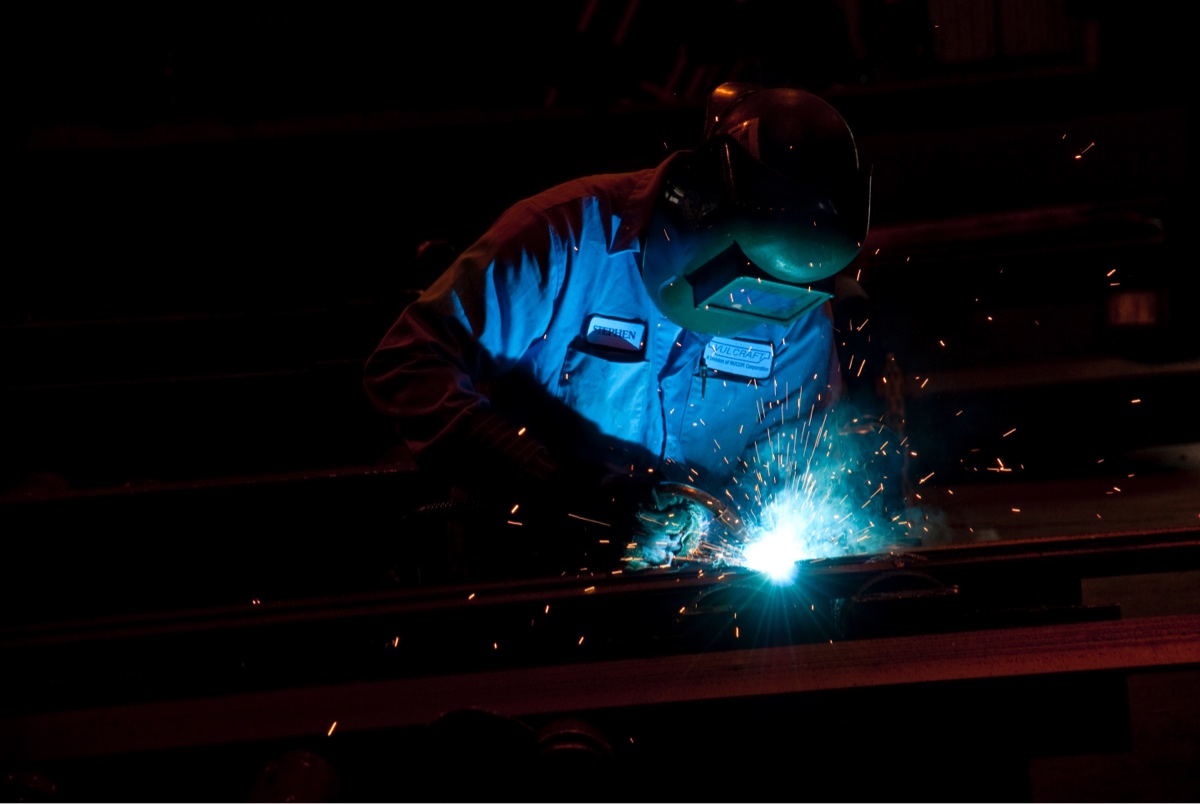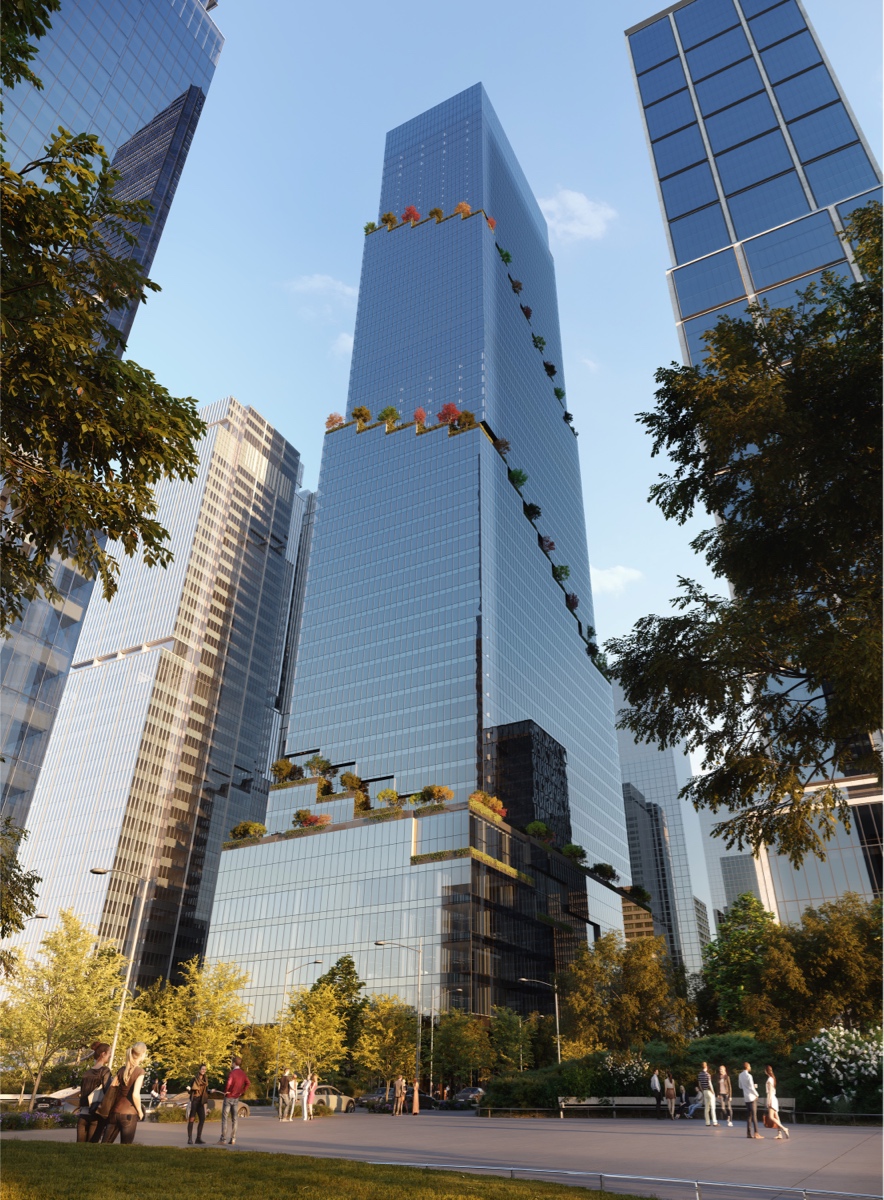
The Benefits of Aeos™ A913 Structural Steel Vs. ASTM A992
Discover the Sustainability and Design Benefits of ASTM A913 High-Strength Structural Steel
Structural steel wide flange sections are essential to the construction process to support heavy loads due to their immense strength, and ASTM (American Society for Testing and Materials) A992 is the commonly specified structural steel specification. However, the adoption of quenched and self-tempered (QST) structural steel including Nucor’s Aeos™ ASTM A913 is revolutionizing the steel construction industry.
Although the A913 specification has been around for over 20 years, there has been a renewed interest in QST high-strength structural steel (65, 70, 80 ksi) like Aeos in recent years due to the significant benefits compared to traditional ASTM A992 steel.
What is QST structural steel and why does it matter? This article explores three ways Aeos can benefit your construction project along with its use cases. You can also reach out to Nucor’s Construction Solutions team about your specific project to discover if Aeos can help meet your project goals.
WHAT IS THE QUENCHED AND SELF-TEMPERED (QST) STEEL PROCESS?
The QST thermo-mechanical treatment process is the interrupted quench of large steel wide flange sections followed by a self-tempering process. The interrupted quench is accomplished with water spray modules located after the last stand in the structural mill where the steel is rapidly cooled but has enough retained thermal energy to temper the steel as well. This process produces a steel wide flange section with higher yield and tensile strength properties combined with excellent ductility.
3 BENEFITS OF AEOS™ ASTM A913 HIGH-STRENGTH STRUCTURAL STEEL
1. MATERIAL EFFICIENCY: TONNAGE & CARBON FOOTPRINT
Working with a higher strength steel like Aeos can lead to reduced tonnage, which can also yield a reduction in a project’s carbon footprint through less material usage. When individual member weight is reduced, transportation, crane and foundation requirements can be optimized. For many project types, Aeos offers architects and designers more room for leasable space due to its high strength-to-weight ratio.
An additional benefit of utilizing Aeos wide flange sections is the specification requires mandatory Charpy V-notch impact (CVN) tests at the flange locations. The Charpy impact test is a standardized high strain test to determine the amount of energy absorbed by a material during a fracture, and it provides a level of confidence to the design engineer of the resistance to brittle fracture of the wide flange section. Additional testing based on sample location and flange thickness is available; please reach out to Nucor’s Construction Solutions team for assistance or if your requirements differ from those in A913 or Supplement S30.
Aeos ASTM A913 also offers metallurgical benefits compared to A992 including enhanced brittle fracture resistance, increased ductility, improved weldability and a carbon maximum about half of A992. When comparing Carbon Equivalent (C.E.) maximums, Aeos has a comparable C.E. level to A992 but with higher tensile properties. Comparable C.E. levels can lead to welding efficiencies when using Aeos.
Aeos phosphorus, sulfur and copper maximums are also lower than A992, thus providing a higher quality structural steel section. The lower the copper, sulfur, and phosphorus, the better the steel’s mechanical properties. Some copper is beneficial for corrosion resistance, but too high a level may create a surface defect. Phosphorous and sulfur make steel brittle; that is why ASTM specifies a maximum content of these elements. In summary, for equivalent chemistry, higher strength steel can be utilized with the same degree of weldability.
2. SUSTAINABLE, LOW-EMBODIED CARBON STEEL
The steel you use matters and not all steel is produced the same way. Extractive or integrated steelmaking involves mining raw materials and using blast furnace and basic oxygen furnace (BF/BOF), a carbon-intensive steelmaking technology. Alternately, Nucor utilizes a sustainable, circular steelmaking process using electric arc furnace (EAF) technology to create steel with less than half the carbon emissions compared to steel created using the integrated steelmaking process. Learn more about the two ways to make steel.
Aeos is the lowest-embodied-carbon steel of its kind, made with more than 95% recycled content using our circular steelmaking process. Nucor is the only domestic producer of Aeos ASTM A913 which can simplify your supply chain by eliminating challenges with overseas imports while reducing additional international shipping carbon emissions and fees.
Aeos’ high strength-to-weight ratio means you need less structural steel to support the same loading conditions. This tonnage reduction results in a reduction of total embodied carbon for a project, which also reduces global warming potential and your Scope 3 emissions. This makes Aeos an ideal tool in your design toolkit when looking to achieve a project or organization’s sustainability goals.
3. FABRICATION EFFICIENCIES AND REDUCED WELD PREHEAT REQUIREMENTS
In addition to the material strength and sustainability benefits, Aeos can also lead to fabrication efficiencies. Since less material is needed to support the same loads compared to A992, Aeos weighs less and is easier and safer to move around the shop and/or jobsite.
Aeos’ unique metallurgical properties also can lead to significant savings in fabrication, labor and energy costs, as well as in field-welded connections. A913 is a prequalified material per American Welding Society (AWS) D1.1 Structural Welding Code – Steel in grades 50 and 65. A913 is classified as a Category D material, which does not require preheat for welding at all thicknesses due to the limits on maximum carbon and carbon equivalent values. Removing preheat welding requirements can help move the material through the fabrication shop more quickly and save energy.
 Image courtesy of Nucor Corporation
Image courtesy of Nucor Corporation
Aeos weldability has been thoroughly tested in fabrication practice and has been in the prequalified chapter of the American Welding Society D1.1 Structural Welding Code – Steel for some time. Within D1.1., A913 is qualified to be welded to other structural grades such as A992 and A572, and Welding Procedure Specifications (WPS) exist for welding the dissimilar steel strengths. One of the unique requirements of the ASTM A913 specification is for the producer to provide the purchaser (service center or fabricator) with weldability data from tests on the previous production (after contract, upon request).
This weldability data consists of a complete joint penetration groove weld according to AWS D1.1 and an oblique Y groove test, according to AWS B4.0. This is done primarily to verify the preheat temperature requirements of the WPS and to give the fabricator/customer guidance on the development of their own WPS. As detailed throughout the AWS guidelines, preheat conditions for welding Aeos can be greatly reduced or eliminated if completed in accordance with AWS D1.1 guidance. This can result in significant time, labor and material savings, both in the fabrication shop and on the jobsite. Additionally, energy consumption is reduced, further enhancing the environmental benefits of using Aeos. Multiple projects have utilized Aeos Grade 50 material in lieu of A992 Grade 50 simply due to the welding preheat benefits that are inherent to the material.
Explore the Aeos welding guidelines and learn more about the benefits of reducing weld preheat.
A913 IN BUILDING CONSTRUCTION
 "The Spiral" at 66 Hudson Boulevard in New York City. Image Credit: Rendering Courtesy of Binyan Studio
"The Spiral" at 66 Hudson Boulevard in New York City. Image Credit: Rendering Courtesy of Binyan Studio
For building structures, the most significant advantage of this specification (A913) is for column and truss sections where the designer can realize a 10 to 20 percents by using the higher strength available in Aeos Grade 65 as compared to the standard 50 ksi yield strength of A992. This increased strength has allowed steel structure design to compete successfully against other materials (Vernon, Shane, P.E. Structure Magazine, August 2020).
Notable projects that utilized A913 include Allegiant Stadium in Las Vegas, Nevada; Globe Life Field in Arlington, Texas; two-story warehouse in the Midwest; and “The Spiral” 66 Hudson Boulevard project in New York City.
A913 IN BRIDGE CONSTRUCTION
The Aeos ASTM A913 specification has been added to the A709 Standard Specification for Structural Steel for Bridges as Grades QST 50, QST 50S, QST 65 and QST 70.
Buchanan County in Iowa has completed a single span bridge made with wide flange sections produced to Aeos Grade 65/A709 QST 65 specification. Preliminary fatigue tests comparing A913 to A992 were performed at Edison Welding Institute in Columbus, Ohio indicated a higher endurance stress when utilizing Aeos. More fatigue property research needs to be completed to make this finding conclusive; however, the initial data is promising.
Continued use of Aeos in bridge applications is an opportunity for further growth in utilizing high-strength structural steel shapes to lower the overall weight and cost of bridge construction.
AVAILABILITY OF A913 STEEL
Nucor remains the only North American producer of Aeos™ A913 steel wide flange sections, available in grades 50, 65, 70 and 80.
Aeos is available in several W-sections. Lighter weights are not available in A913 due to the thermal energy requirement of the process as the wide flange section has to have enough thermal mass to temper the section after quenching. Designers are encouraged to contact Nucor to determine section availability in A913 and rolling schedule/delivery time frames or to learn more about Aeos specifications, construction advantages, welding benefits and availability.
The potential of higher strengths of A913 is continually being researched. We started with Aeos Grade 65 but have continuously developed higher grades including Grade 80. The use of higher strength structural steel that is produced in the as-rolled condition, versus built-up sections, would allow design engineers to take advantage of the increased benefits of steel structures on projects.
For more information, reach out to Nucor’s Construction Solutions team to talk to a specialist about Aeos high-strength structural steel and what solutions Nucor can provide for your sustainable and complex building and bridge construction projects.